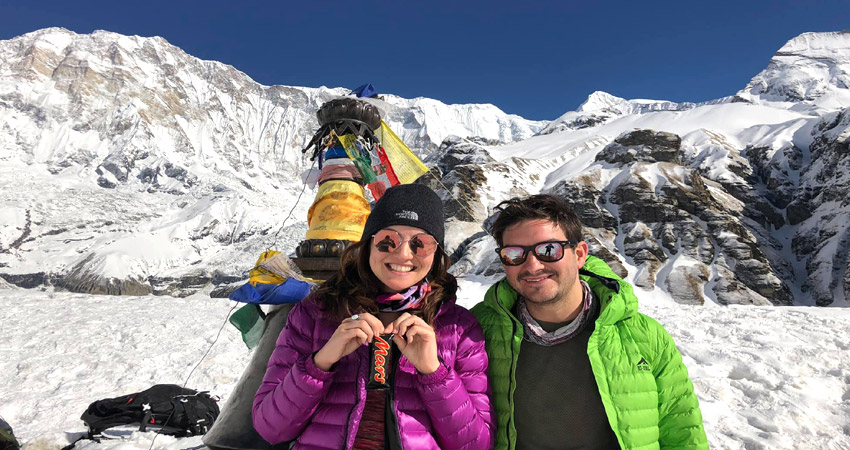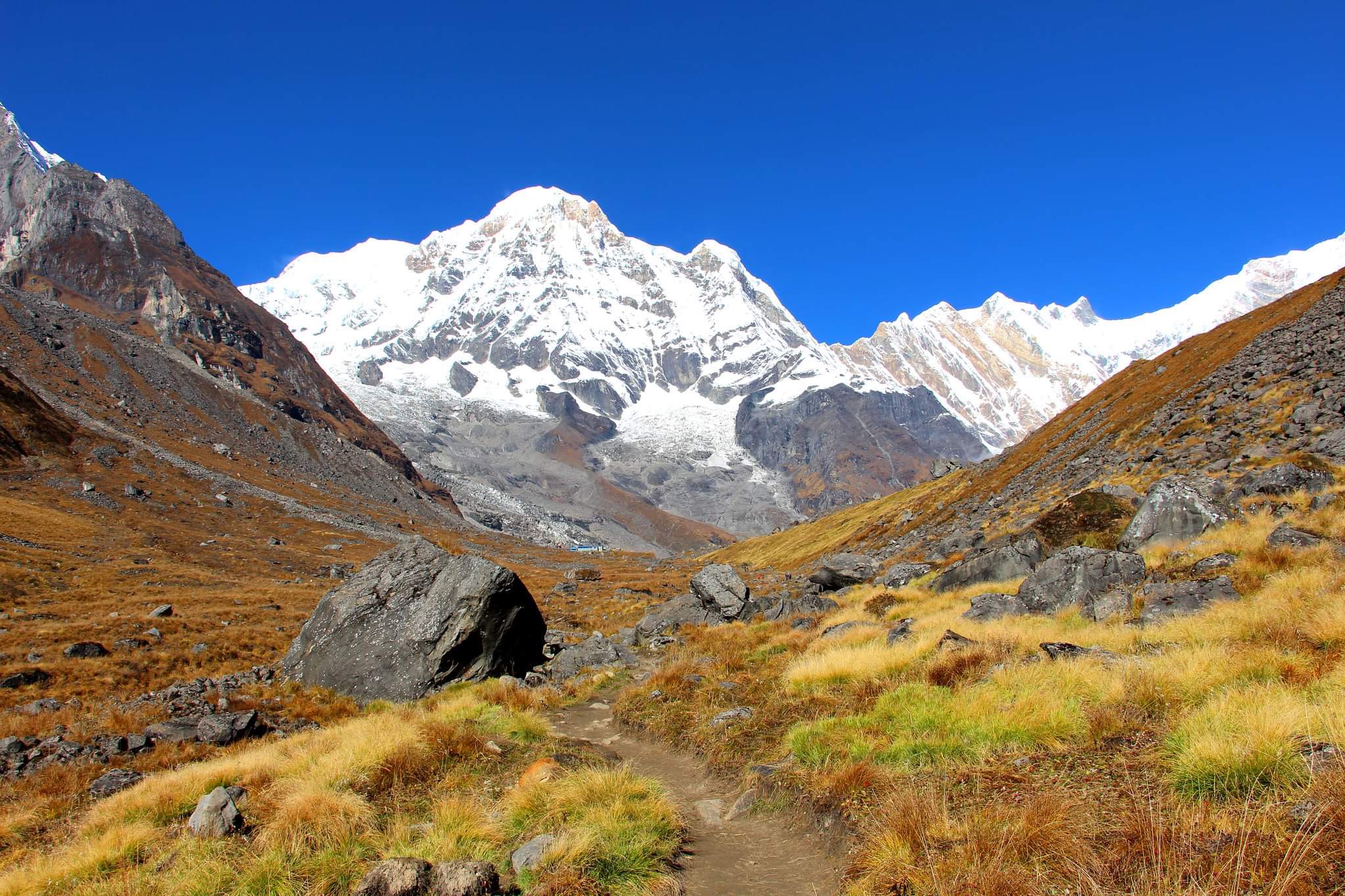Annapurna Base Camp is one of the most breathtaking locations you can visit when you are in Nepal. If you love adventure and want to explore the best of nature, you should not miss out on the Annapurna Base Camp trek. Besides the beautiful view of the mountains, you will also come through the most enchanting, lush greenery during your trek. Likewise, there are plenty of faunas on the way to your destination that you won’t, in any way, miss out on.
The authenticity of the natural beauty is justified when you hear the melodious songs sung by the birds, while coming forth with a captivating view of the wildlife. One of the most popular flowers you will also see in an abundance is Rhododendron, which is also the national flower of Nepal.

Source (https://abovethehimalaya.com/annapurna-base-camp-trek-7-days.html)
However, with everything going in your favor when it comes to traveling to the most beautiful place in the country, you also have to be sure to reach the destination at an equally favorable time of the year. One of the main reasons why you should avoid going to the region at just any time without prior knowledge is that mountainous regions are never human friendly.
You always have to be cautious about the terrains ahead of you along with how the weather is going to be throughout the year. But, you need not worry about these factors because this article is here to guide you through the best and worst times of the year to go on Annapurna Base Camp trek. Make sure to read till the end of this article to know more!
Which is the best time of the year to go on Annapurna Base Camp trek?
You should consider going on Annapurna Base Camp trek in spring and fall. Talking about spring, you really don’t have to worry about heavy snowfall, extremely wet and difficult terrains, or extreme heat and cold. This time of the year also sees the best of the beauty of flora and greenery in the Annapurna Base Camp area.
Likewise, you will be able to enjoy the true beauty of the mountains as well. The air is extremely fresh and there is moderation in the crowd of people around the base camp area as well. Another advantage of going for the Annapurna Base Camp trek in spring is that your eyes will be filled with popping colors as the season is also synonymous to colors.
This further avoids the dull and unappealing nature of the mountainous region, which is quite common, on the other hand, during the winter. A downside, which is also unavoidable at all seasons when you are in Annapurna Base Camp, is that the nights are extremely cold due to temperature drop. This problem, still, can be overcome with proper planning and by carrying adequate materials for the trek. Spring season includes months like March, April, May, and June.
Fall or autumn is just as best if you want to go on Annapurna Base Camp trek because of the weather favorability. The beautiful scenery is accentuated during the season. During fall, trekkers don’t have to undergo the problem of difficult trails. Moreover, walking through the trails becomes the easiest when you go on the trek during fall season as there is zero chance of rainfall while the weather is just moderate enough to facilitate the trekkers. The clarity and freshness in the air will make your trek all the more enjoyable.
You will also be able to see the beauty of fall as the lush green forests are changing colors. Though you won’t be able to see as many eye popping colors in the surroundings of the Annapurna Base Camp area during fall as you can during spring, you will not be disappointed by the flora, fauna, and panoramic view that your trek is going to provide you during the season. Since you will be traveling to the rural part of Nepal, you will also get to observe the agricultural practices around the Annapurna Base Camp area, since fall is the “harvest season” of the place.
Just like spring, however, you also have to keep yourself prepared and as warm as possible before you come for the trek to the Annapurna Base Camp area. While it is easy to survive the cold with a proper preparation, you will have to suffer quite a bit and even be the victim of altitude sickness, respiratory problems, and sometimes, even frost bites (given you are going to higher altitudes during your trek). Fall includes months like September, October, and November.
Can you go on Annapurna Base Camp trek during winter, summer, and monsoon?
Though not the best time to go on Annapurna Base Camp trek, there are some trekkers who go to the trek during winter, summer, and even monsoon. You have to be aware of the fact, nevertheless, that going to the base camp during these months usually means inviting avoidable stress and issues to your journey. Winter is extremely cold. Since Annapurna Base Camp is situated at a high altitude, there is a big chance of snowfall during the season.
Layering yourself up with a proper amount of clothes and carrying the right gear will accommodate you only to a small extent. The trails are not as simple to walk through either, mostly because of the melted snow, or even snowfall on the paths. There is just as big of a likelihood when it comes to unforeseen avalanches. With so many risks, there are still trekkers who like to go on winter treks to the Annapurna Base Camp. The winter months include December, January, and February.
Monsoon and summer, with the heavy likelihood of rainfall, are the least favorable. The weather is just as bad. The slippery pathways cannot be avoided even with the right trekking gears. There is just as big a chance for trekkers to suffer from accidents on the trails.
When you have to look at the few advantages of trekking to the Annapurna Base Camp during these seasons, they would be the beautiful, eye-catching, colorful view of the flora, green forests, and the ever-alluring mountain peaks. The monsoon and summer months include July and August.

